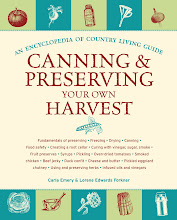Someone once asked Martin Luther, “What should I do on the last day of earth?” Luther replied, “Plant a tree.”
It’s a wonderful, spiritual thing to plant a tree. Each tree is a living thing that can share the rest of your life. It will grow and give you shade, elegant beauty, food to eat, clean air to breathe, and branches for birds to nest in and children to climb in and for you to hang your hammock on and take a well-deserved nap.
Carla Emery loves trees so much that she came up with the most wonderful idea: guerrilla tree planting.
The idea here is that wherever you are—in an urban or rural area—don’t miss an opportunity to plant new life wherever you see fit. Pick a neglected space on private land or an open one on public land. Then you sneak up and plant your tree there. Plant trees on your holidays. Don’t leave town without some seeds or seedlings in your back seat! Don’t go picnicking or backpacking without a few gifts to the earth in the form of seeds or seedlings: evergreens, or fruit or nut trees. Keep a private tally of how many trees you’ve planted so far and take pride in it. Go back and visit some of them years later and say, “Hi, I’m your parent. My, but you’re looking good!” Expect some losses; it’s okay. Thankfully, Carla Emery has a few tips to make your next guerrilla tree planting venture a success:
Consider your climate
Is your climate subtropical or tropical, or temperate? The amount of sunshine falling on leaves directly affects the plant’s rate of food production in its leaves. The more sunshine there is, the greater the fruit production per acre. The farther north you live, the higher in altitude you are, the shorter your frost-free season.
What is your pollinating situation?
Some nut and fruit trees, and vines (such as kiwi), can’t make fruit alone; they can be either male or female, and they need another tree to be a pollinizer for them in order to bear fruit. Other trees are “self-fruitful” or “self-fertile” or “self- pollinating.” There are trees that are kind of in-between; they’ll produce some harvest, but only a small crop unless they get cross-pollinated by a different plant. Trees that are to be wind-pollinated should be planted within 100 feet of each other.
How much space do you have?
One of the main questions you have to ask when shopping for a tree is, “How big will it get?” Little seedlings can grow into awesome 100-foot giants. When guerrilla planting, make sure you are planting trees that will only grow to a manageable size and won’t require pruning or major upkeep.
No matter what, plant one or more trees every year. And plant as many — or more — as what you take out. If you’re planting various kinds of trees your harvesting will be staggered because they grow at different rates and you may be harvesting different sorts of products from them. You can sell Christmas trees, nuts, maple syrup, firewood, fence posts, sawlogs, and fruit. If you have livestock fodder trees, you can get rich selling pork, because pigs can more easily get a total diet from tree crops than any other animal. So plant some nut, fruit, sugar, stock forage, timber, or woodlot trees every year on your land. And if you don’t have land, or have no more room, then plant them on someone else’s land, doing your share to guarantee our mutual future.
It takes a long time for a tree to grow, and some of them may not make it. And, sooner or later, grown trees, like people, die of old age. But then they can be fuel or building material, or a home for wild things until they finally decay and become food for other trees in the fullest completion of their life cycle. In the space where they once lived, plant new trees, continuing their spirit of hope. Plant a tree for your housewarming, and one for each anniversary, one for farewell — any excuse will do, the more often the better!








1 comment:
As a general rule, trees should be transplanted no deeper than the soil in which they were originally grown. The width of the hole should be at least 3 times the diameter of the root ball or container or the spread of the roots in the case of bare root trees. This will provide the tree with enough worked earth for its root structure to establish itself.
Post a Comment